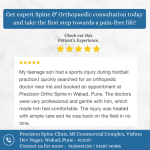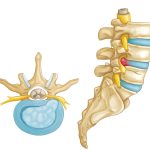Introduction:
Cataracts are a common eye condition that affects millions of people worldwide, particularly as they age. Despite its prevalence, many individuals may not fully understand what cataracts are, how they develop, or the available treatment options. In this comprehensive blog, we’ll delve into the intricacies of cataracts, exploring their causes, symptoms, diagnosis, treatment modalities, and preventive measures. By gaining a deeper understanding of cataracts, you can better equip yourself with the knowledge to protect your vision and maintain optimal eye health.
What Are Cataracts?
Cataracts refer to the clouding of the lens in the eye, which leads to impaired vision. The lens, located behind the iris and pupil, plays a crucial role in focusing light onto the retina at the back of the eye, allowing us to see clearly. However, when the lens becomes cloudy, it obstructs the passage of light, resulting in blurry or distorted vision.
Causes of Cataracts:
- Aging: The primary cause of cataracts is aging, with the majority of cases occurring in individuals over the age of 60. As we grow older, the proteins in the lens may clump together, causing cloudiness and opacity.
- UV Exposure: Prolonged exposure to ultraviolet (UV) radiation from the sun can accelerate the formation of cataracts. Wearing sunglasses with UV protection and wide-brimmed hats outdoors can help reduce this risk.
- Genetics: Some individuals may be genetically predisposed to developing cataracts at an earlier age or may inherit certain genetic conditions that increase their susceptibility.
- Medical Conditions: Certain health conditions, such as diabetes, hypertension, obesity, and prolonged steroid use, can elevate the risk of cataract formation.
- Trauma or Injury: Physical trauma to the eye, such as blunt force trauma or injury from a foreign object, can damage the lens and contribute to the development of cataracts.
Symptoms of Cataracts:
The symptoms of cataracts can vary depending on the type and severity of the condition. Common signs and symptoms include:
- Blurred or hazy vision
- Increased sensitivity to glare, especially from headlights or sunlight
- Difficulty seeing at night or in dimly lit environments
- Faded or yellowed colors
- Double vision in one eye
- Frequent changes in eyeglass prescription
It’s essential to seek prompt medical attention if you experience any changes in your vision, as early detection can facilitate timely intervention and treatment.
Diagnosis of Cataracts:
Cataracts are typically diagnosed through a comprehensive eye examination conducted by an optometrist or ophthalmologist. The examination may include the following components:
- Visual Acuity Test: Assessing how well you can see at various distances using an eye chart.
- Slit-Lamp Examination: A microscope with a bright light that allows the doctor to examine the structures of the eye, including the lens.
- Retinal Examination: Dilating the pupils with eye drops to examine the retina and optic nerve at the back of the eye.
In some cases, additional tests such as a glare test or contrast sensitivity test may be performed to evaluate the extent of vision impairment caused by cataracts.
Treatment Options for Cataracts:
The primary treatment for cataracts is surgical removal of the cloudy lens followed by the implantation of an artificial intraocular lens (IOL). Cataract surgery is one of the most commonly performed surgical procedures worldwide and is highly effective in restoring vision.
- Phacoemulsification: This minimally invasive technique involves using ultrasound energy to break up the cloudy lens into small fragments, which are then suctioned out of the eye through a tiny incision. The surgeon then inserts a clear IOL to replace the natural lens.
- Extracapsular Cataract Extraction (ECCE): In cases where phacoemulsification may not be suitable, such as advanced or dense cataracts, ECCE may be performed. This technique involves removing the entire lens in one piece through a larger incision and replacing it with an IOL.
- Laser-Assisted Cataract Surgery: Recent advancements in technology have led to the development of laser-assisted cataract surgery, which uses a femtosecond laser to perform precise incisions and fragmentation of the lens. This approach offers greater accuracy and reproducibility compared to traditional manual techniques.
- Lifestyle Lens Options: In addition to standard monofocal IOLs, patients undergoing cataract surgery may choose premium lens options such as multifocal or toric IOLs. These advanced lenses can correct presbyopia (age-related near vision loss) or astigmatism, reducing the need for glasses or contact lenses after surgery.
Recovery and Rehabilitation:
Most patients experience a rapid improvement in vision following cataract surgery, with minimal discomfort and downtime. However, it’s essential to follow post-operative care instructions provided by your surgeon to promote optimal healing and minimize the risk of complications. These instructions may include:
- Using prescribed eye drops to prevent infection and inflammation
- Avoiding strenuous activities and heavy lifting
- Wearing a protective eye shield at night to prevent accidental rubbing or injury
- Attending follow-up appointments with your surgeon to monitor your progress and address any concerns
While vision may continue to improve in the days and weeks following surgery, some patients may experience temporary side effects such as dry eye, light sensitivity, or mild fluctuations in vision. These symptoms typically resolve on their own as the eyes heal.
In addition to physical recovery, patients may benefit from vision rehabilitation programs aimed at helping them adapt to their new visual capabilities. These programs may include vision therapy, low-vision aids, and adaptive techniques to enhance functional independence and quality of life.
Prevention Strategies for Cataracts:
While certain risk factors for cataracts, such as age and genetics, are beyond our control, there are several proactive measures you can take to reduce your risk:
- Protect Your Eyes from UV Radiation: Wear sunglasses with UV protection and wide-brimmed hats when outdoors, especially during peak sunlight hours.
- Maintain a Healthy Lifestyle: Eat a balanced diet rich in fruits, vegetables, and antioxidants, which can help protect against age-related eye diseases. Avoid smoking and excessive alcohol consumption, as these habits can accelerate cataract formation.
- Manage Underlying Health Conditions: If you have diabetes, hypertension, or other medical conditions, work with your healthcare provider to manage them effectively and minimize their impact on your eye health.
- Attend Regular Eye Examinations: Schedule comprehensive eye exams with an optometrist or ophthalmologist at least once a year, especially if you’re over the age of 60 or have a family history of eye diseases. Early detection and treatment of cataracts and other eye conditions can help preserve your vision and prevent complications.
- Stay Informed: Educate yourself about cataracts and other age-related eye diseases, and be proactive in seeking medical attention if you notice any changes in your vision. Awareness and early intervention are key to maintaining optimal eye health as you age.
Conclusion:
Cataracts are a common and treatable eye condition that can significantly impact one’s vision and quality of life. By understanding the causes, symptoms, diagnosis, treatment options, and preventive measures associated with cataracts, you can take proactive steps to protect your vision and maintain optimal eye health as you age.
#pune #pcmc #chinchwad #hospital #medical #medicalservices #cataract #eyedoctor #eye #glaucoma #conjunctivitis #ophthalmologist #humaneye #eyediseases #eyepain #pinkeye #hazeleyes #presbyopia #eyeinfection #phaco #phacomachine #phacosurgery #eyeproblems #motibindu #motibinduoperation #dryeye #cataractoperation #cataracttreatment #eyesurgeon #motibinduoperation













